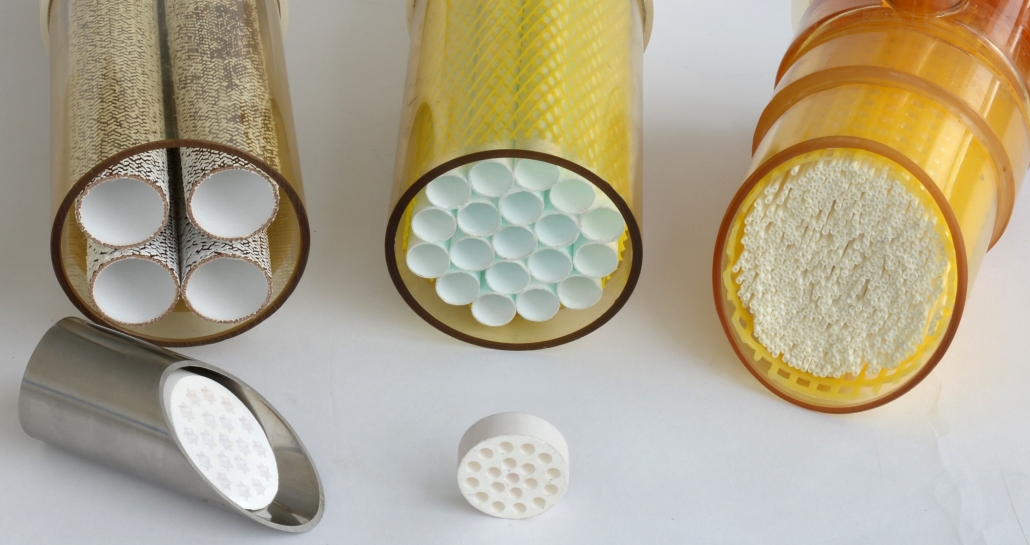Tubular Membranes

DescriptionTubular
Membranes Description Tubular membrane modules are tube-like structures with porous walls. Tubular modules work through tangential crossflow and are generally used to process difficult feed streams such as those with high dissolved solids, high suspended solids, and/or oil, grease, or fats. They typically have 3” to 4” OD tubes that are packed individually into a long PVC housing and can be either polymer- or ceramic-based.
How it works
Tubular modules consist of a minimum of two tubes; the inner tube, called the membrane tube, and the outer tube, which is the shell. The feed stream goes across the length of the membrane tube and is filtered out into the outer shell while concentrate collects at the opposite end of the membrane tube. They are commonly used for applications such as juice filtration, oily wastewater treatment, MBR and other high solids processes.

Advantages
Tubular systems have less fouling compared to plate and frame systems, and a similar amount of fouling when compared to spiral and capillary. Tubular systems allow for robust cleaning methods such as the use of harsh chemicals, backwash, and even mechanical cleaning which might not be available for other system configurations. They can handle the highest solids and emulsified oil load compared too many other membrane types and can be physically cleaned with sponge balls.
